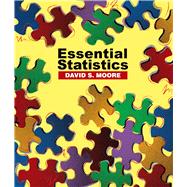W.H. Freeman is excited to be publishing a new text by David Moore: Essential Statistics.
David Moore’s considerable experience as a statistician and instructor, and his commitment to producing high-quality, innovative introductory statistics textbooks motivated him to create Essential Statistics. The text offers the same highly successful approach and pedagogy of David Moore’s bestselling The Basic Practice of Statistics (BPS), Fifth Edition, but in a briefer, more concise format. Through careful rewriting, he has shortened and simplified explanations, to better highlight the key, essential, statistical ideas and methods students need to know.
The text is based on three principles: balanced content, the importance of ideas, and experience with data. Using a “just the basics” approach, the text clarifies and simplifies important concepts and methods, while engaging students with contemporary, realistic examples. Throughout the book, exercises help students check and apply their skills. A four-step problem-solving process in examples and exercises encourage good habits that go beyond graphs and calculations to ask, “What do the data tell me?”
Essential Statistics is what its name suggests: a basic introduction to statistical ideas and methods that aims to equip students to carry out common statistical procedures and to follow statistical reasoning in their fields of study and in their future employment.








